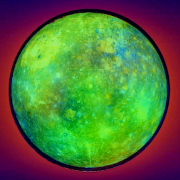Leaderboard
Popular Content
Showing content with the highest reputation on 07/24/2025 in all areas
-
1 point
-
Hello all, I would like to share the second movement of my Symphony No.1. I belive this is a movement with more contrast than the first movement, and I wish you will enjoy it. In case you haven't listened to the first movement, here is the link: Symphony No.1 - First Movement - Orchestral and Large Ensemble Thank you for listening! HoYin1 point
-
Hello friends! I am very happy to write something here again. This time I would like to present you this composition of mine. Again you can hear my specific features in music. Otherwise, I apologize if the recording will rattle you somehow, some lesser quality headphones and speakers can't handle it completely 🙂1 point
-
hello, it's been a while because i switched browsers, but here's a new song! also, can someone tell me what genre this is? i can't tell.1 point
-
Hi all! These are the three inner movements of my new piano partita. There is also an introductory movement and a final, stylized gigue. I had some difficulties in exporting a MIDI rendering for those two movements, so they are not included here. There are strong thematic and sectional connections across each movement, so they do make a little less sense this way than they would in full context. Just bear that in mind while listening. I'd love any thoughts on the music, the piece is for a good friend of mine and I'd like to give it to them in tip-top shape! PARTITA 2-4.pdf1 point
-
@PeterthePapercomPoser Thank you so much for your reply! If I can get better recordings of these pieces I’ll send them, that aside: - I think you’re right about the “wacky/quirky” quality to this “Danse.” I certainly don’t think it could be called anything else. It was actually meant as an homage to Poulenc, something shared throughout the set. This whole partita is more or less a tribute to Les Six (and to a lesser extent, Ravel). When I hear this piece, though, I start to imagine one of the evil muppets (like Animal, or the bomb guy) just staring at you. Bare eye contact. No looking away. Just that muppet, and this music is the illustration of that moment. (The italian tempo/expressive indication literally translates to “Fast and a little bit evil.”) - This truly is the fault of poor audio rendering. When played on an actual instrument, even my fairly poor keyboard skills yielded interesting results. This is a very personal piece. There have been some difficult things going on around me and I needed an outlet. For a long time I’ve had something of a block when it comes to just creating music out of emotion; I always create in abstraction, or at least, tend to. That’s been breaking down a little bit recently, and this was the product of it. It was the first piece completed in the set. - This Pavane is a revision of a much earlier piece. It was in my first year of composing, I joined this forum and this was one of my “Nocturnes” (I have not written any nocturnes I would consider part of my works, aside from a secret project I may reveal later). Anyway, it was very repetitive, and dull. The former quality was kept in this piece, but reworked with a more mature understanding of counterpoint and rhythmic theory. Honestly, I consider this to be nothing more than a real, true-to-vision version of that little piano piece. I just didn’t have the technique to write it the way I wanted to back then.1 point
-
Hi @mercurypickles! Danse - I love the wacky/quirky nature of this Prokofiev-esque piece! The parallel b9's in the melody also add a lot to the character of it. Makes it sound like a dancing clown or something! Haha. Also - I think if there were 4 8th note pick-ups to this it could easily be considered a Gavotte. Or if it had a quarter note or two 8th note pick-ups it could also be a Bourree. But since it doesn't have either of those just calling it a "Danse" certainly fits! Ricercar - for me this is perhaps the most formless and indistinct part of the suite. In the beginning, when listening with the score it looked like maybe it had more of a resemblance to a canon than a ricercar, which I presume to be a slow/early form of a fugue. I find it really difficult to hear any independent voices in this piece which I think is supposed to be a display of contrapuntal knack. It just sounds like the top voice gets the emphasis making it seem like a homophonic piece rather than polyphonic. Pavane - This one also has some very interesting harmonic inflections! The recurring motif is easily identifiable throughout the piece and there's actually more voice independence here than in the ricercar imo. I also think this might fit under the description of an instrumental version of a dance that has kind of lost some of its dance-like sprightly-ness. Thanks for sharing these! I hope to eventually hear the whole suite - overall I definitely found these enjoyable!1 point
-
I am a firm believer that the Alain Mayrand video up top is the single best video on orchestration on the internet right now, no joke.1 point
-
After coming home I took my guitar and wanted to experiment. There is a bit of microtonal stuff in there based on tuning. I have written a piece for orchestra and guitar before, but for some reason I feel like I am overwhelmed with possibilities at the moment. My plan is to expand this idea for orchestra. This is basically a transcript of my improvisation. It will be orchestra with a guitarist. I want to brainstorm this stuff. Form will not be identical. Feedback on notation technique is appreciated as well. I actually thought about removing all the time signatures (since the caesura signifying a 1/16th note break is a compromise in itself), but it's there for now. Audio file isn't perfect, please check the score simultaneously (had problems with the arpeggios where there is a simultaneous E and E-10c). (Oh yeah, this is on solo guitar, it doesn't say it on the score apparently) For some of my own immediate thoughts: I am in-between starting the orchestral version with the guitar on its own or starting with an intro of some kind. I like the abruptness of the start of the guitar theme. It's like stubbing your toe and being angry at the table corner for bestowing such pain upon you. The guitar impro version is also quite dense, so maybe there's space between the ideas. Additionally there is a lot of fragmentation, which can work well in a Rite of Spring style, where everyone sort of does their own fragment. Maybe this could grow over time (I also like the returning to theme). In the C part the recording does not convey what it sounds like on the guitar (issues with my own technical limitations aka lack of will to fight with musescore) and there is something I want to do there. One of the larger problems will be the microtonality. Of course guitar is quite a different instrument to many others and the microtonality here is relatively tame (except for the bends) and some instruments can certainly be prepared to match the vibe of the guitar (microtonally tuned harp?), but I feel like it will still pose many issues. Although I must admit, sometimes older string quartets etc. are not perfectly in tune - and I love that vibe. And if you find the piece humorous or straight up dislike it, don't be afraid to say it! I don't want to be stuck in an echo chamber and I have thick skin. Honest feedback is my favourite. Keep in mind still that this is the start of an idea. Apologies if there are some etiquette mistakes, new here. Love from Finland -Pyry 30 degrees.pdf1 point
-
Hello @PaavolaPyry and welcome to the forum! Very interesting piece! I have a limited (some) amount of experience with guitar playing as well as microtonality. From what I understand in your tuning indications the G string should be tuned slightly sharp, and the B and E strings slightly flat. Since the piece is in drop D tuning as well and basically using D as the tonic, this tuning puzzles me. If you were trying to achieve intervals closer to the ones found in the harmonic series, I'd think that you'd want the G string slightly flat as well (bringing your G#'s in this piece closer to the idealized 11th harmonic and a "purer" tritone sound). Although when I write microtonal music, I have vacillated between different goals, sometimes deliberately going for an "out of tune" sound to create a warped sense of tonality (using 24 tet). Other times I do try to get closer to the intervals in the harmonic series with justly tuned intervals though (using 1/3rd and 1/6th tones). What is your intent with microtonality? Thanks for sharing and I'd be stoked to hear more!1 point

.thumb.png.8b5b433a341551e913a34392660bc95b.png)


.thumb.png.1e2763f479362bbb522da50d31ef2e50.png)